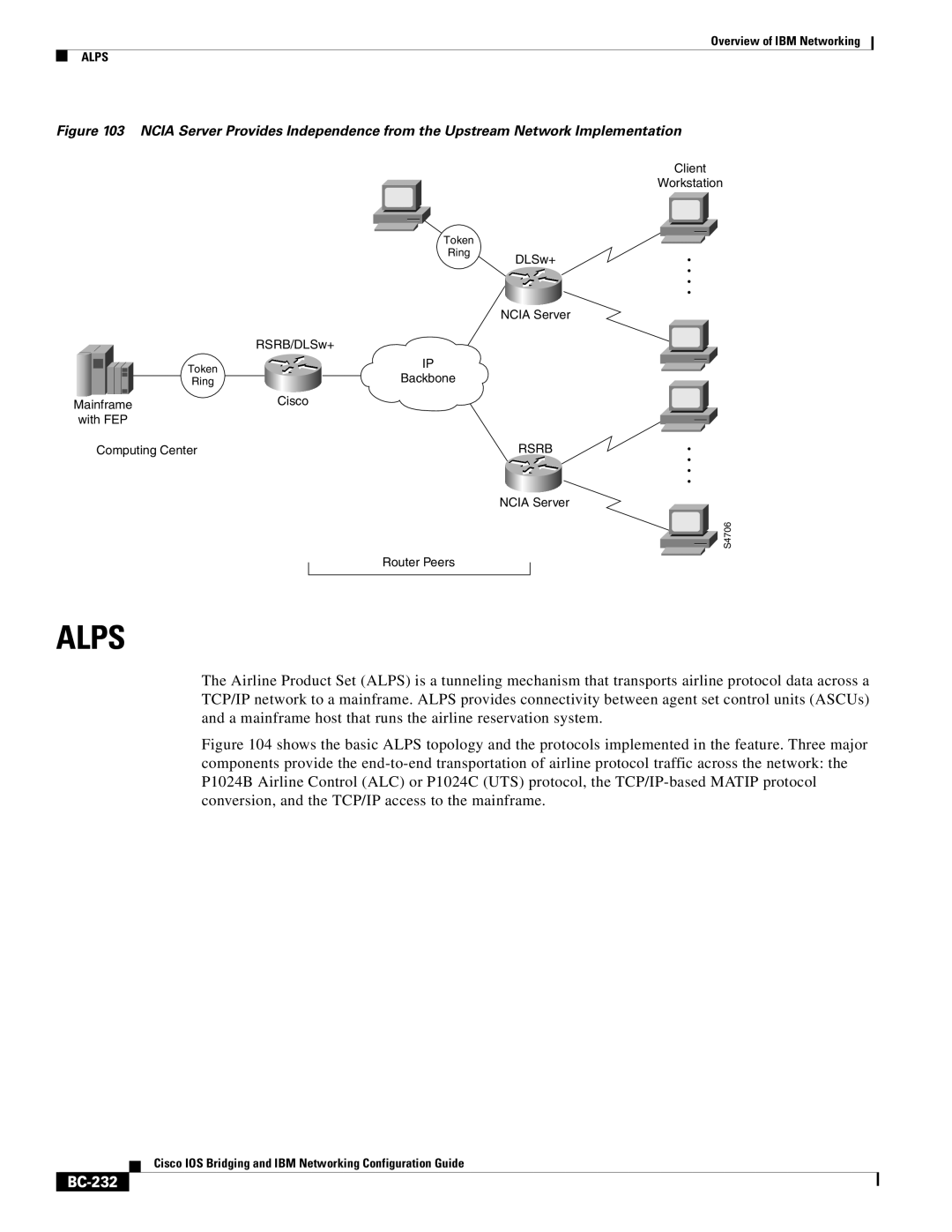
Overview of IBM Networking
ALPS
Figure 103 NCIA Server Provides Independence from the Upstream Network Implementation
|
| Client |
|
| Workstation |
| Token |
|
| Ring | DLSw+ |
|
| |
|
| NCIA Server |
| RSRB/DLSw+ |
|
Token | IP |
|
Backbone |
| |
Ring |
| |
Mainframe | Cisco |
|
|
| |
with FEP |
|
|
Computing Center |
| RSRB |
|
| NCIA Server |
|
| S4706 |
| Router Peers |
|
ALPS
The Airline Product Set (ALPS) is a tunneling mechanism that transports airline protocol data across a TCP/IP network to a mainframe. ALPS provides connectivity between agent set control units (ASCUs) and a mainframe host that runs the airline reservation system.
Figure 104 shows the basic ALPS topology and the protocols implemented in the feature. Three major components provide the end-to-end transportation of airline protocol traffic across the network: the P1024B Airline Control (ALC) or P1024C (UTS) protocol, the TCP/IP-based MATIP protocol conversion, and the TCP/IP access to the mainframe.
Cisco IOS Bridging and IBM Networking Configuration Guide
